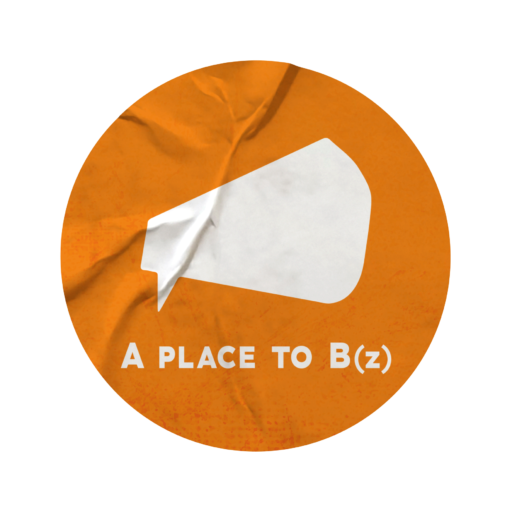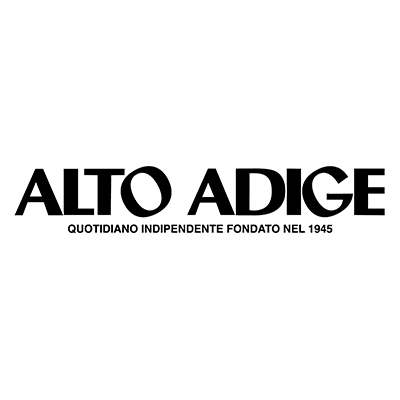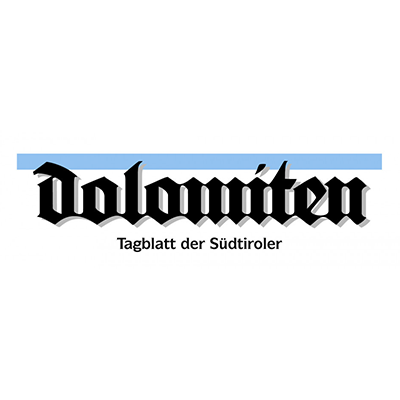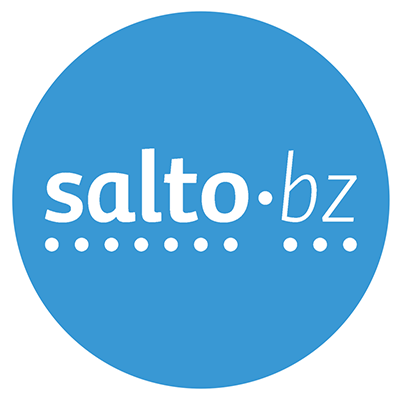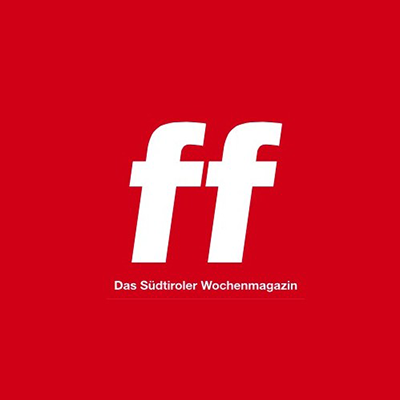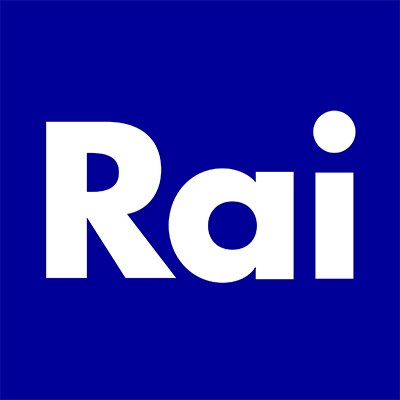University Context
The conversation about the area behind the train station got jumpstarted again by the semester project A place to B(z) by Áron Lőrincz, Maria Summavielle and Marielle Scharfenberg from the Master Eco-Social Design of the Free University of Bolzano. Over the course of the summer semester of 2022, the team of designers focused their work on raising awareness in order to prepare the municipality and the city for opening this site.
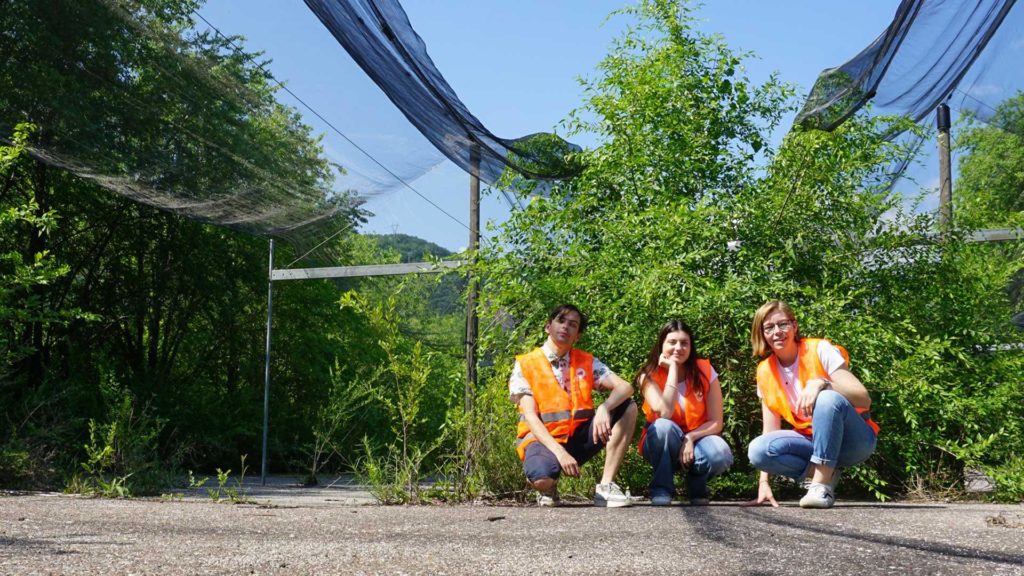
The second semester in the master Eco-Social Design begins with something called the Partner Forum. On this occasion companies, associations and individuals with a project or an idea, which facilitates Eco-Social transformation can present their topic to the group of students. The students then choose a topic they find interesting and form working groups. Philippp Rier and Peter Rier representing lab:bz introduced us to the area behind the train station as a place that is closed to the public, but holds a lot of potential.
Structuring our Process
At the beginning of every project for us, there is the task of finding the problem. This means finding out what exactly it is that has to be changed. Reflecting on this we can then pose more precise questions that eventually lead to possible solutions to the initial problem.
Problem Framing
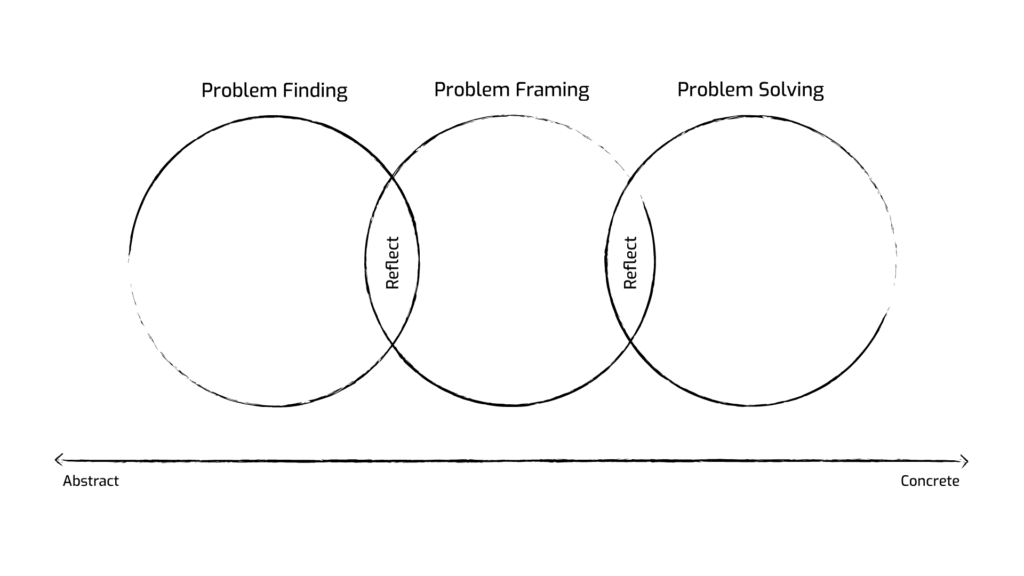
Evolution of the Research Question
At the heart of our work is a belief in civic engagement. We are of the opinion that a project must be bottom-up and citizen-led in order to be accepted and supported by citizens and to become truly sustainable in the long term. This means that the residents of the neighbourhood must be involved in the process from the beginning. They must have the opportunity to express their needs and wishes and to voice their concerns.
We quickly realised that the main problem with this area is that it is a forgotten place. No one thinks about it or even considers it a place. To counteract this we developed a triptych of raising awareness for the site, showcasing potential and provoking action.
Getting an Understanding of the Area
In order to gain a better understanding of the area we made it a priority to visit the site multiple times. Upon visiting for the first time we were struck by the enormous size of the area. On the site, you can see relics of a variety of former uses, yet nature has taken back parts of the area. Throughout our visits, this became even more apparent as we could witness the change in vegetation with the arrival of spring and summer. When visiting the site we tried to focus on our senses, what can see? What can we hear?
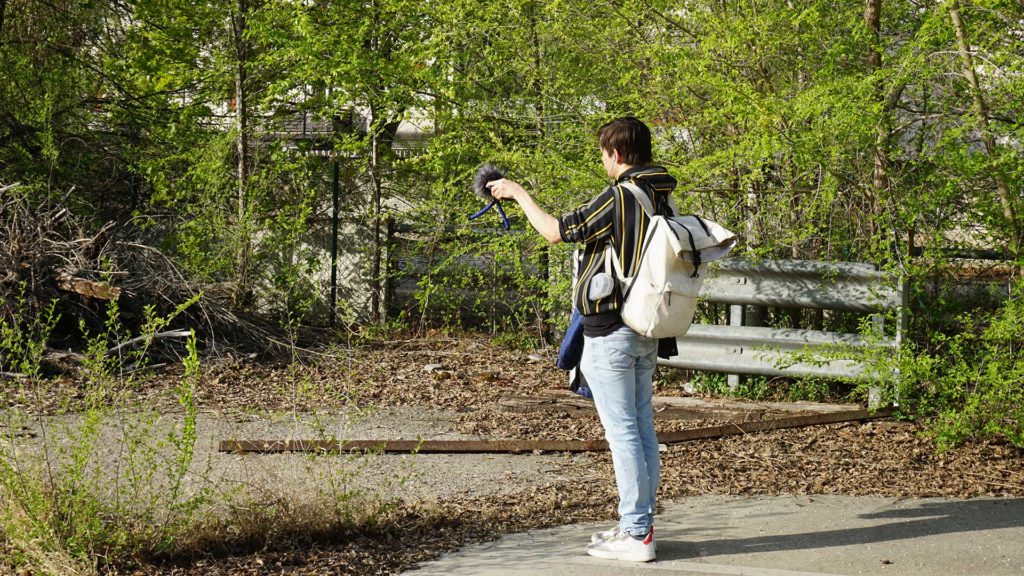
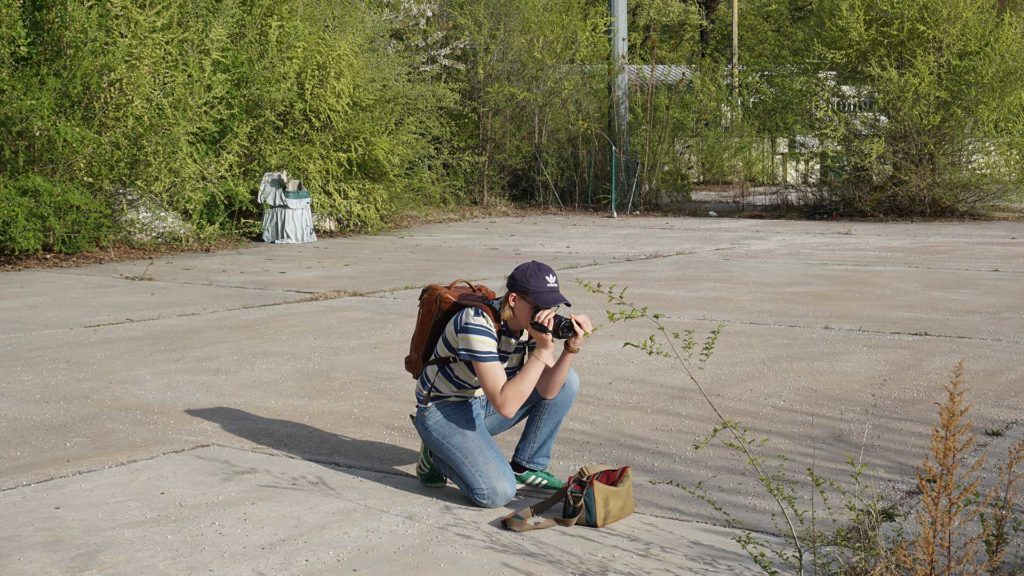
Listening to Neighbours
By interviewing people in the streets, we got a feeling for the general mood towards the area. Most people did not know straight away what we were talking about but got more and more interested in the area while we were speaking. Even the owner of the bar right next to the area did not seem to know a lot about it, yet passed by it every day. One girl said that now that we have talked about it we made her interested and she will go there tomorrow to check it out. When we asked a couple of students what they think the city is going to do with the area, they said that they don’t think that the city will do anything because nothing ever happens in Bolzano, especially not for the youth.

One on of our visits to the site we noticed that in the tunnel, which is on the main route from the city centre to the area, people are regularly drawing on the walls and interacting with each other through writing. This gave us the idea to build on this local custom and put up a Q&A poster to get insight into whether or not neighbours knew the area. Furthermore, we asked for their occupancy, age group and wishes for the area.


We attended a discussion round in the form of a world café organised by the city lab lab:bz. This lab:café took place in a school near the neighbourhood. Besides some members of the neighbourhood advisory board, a few neighbours also took part, the youth was not represented. We brought a model and pictures of the area as well as some postcards, which went down very well and sparked many conversations. The following discussions revolved around the idea that the city should be there more for the citizens and not so much for the tourists. Some participants felt that Bolzano itself, and this neighbourhood, in particular, lacks identity. The common wish was that this area should become a meeting place, a place for social activities and music and a centre for integration. There was also a call to study the biodiversity in the area. Another wish was that the area should be free (non-commercial) and open, adaptable and seasonal. In this way, many different needs could be met and the usage would be more resilient against arguments about why it could not be done. The process itself should be transparent, have a simple organisation and involve the public. Again, there was dissatisfaction with Bolzano’s bureaucracy. The question of how people get to the site was also raised. All in all, the participants were very interested in this project and wanted to know more, some gave us their email addresses.



Raising Awareness
With stickers, posters and postcards we tried to raise awareness on multiple levels, whilst also establishing a clear design language for this project. The name “A place to B(z)” is born from the process of having to create a place and the wish to establish a space where people want to be here in Bolzano. Our logo is inspired by the shape of the parking lot in the area, while simultaneously depicting a megaphone, representing us giving a voice to the inhabitants. The orange colour is taken from the structure which is inside the area.
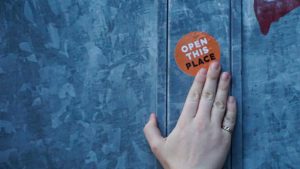
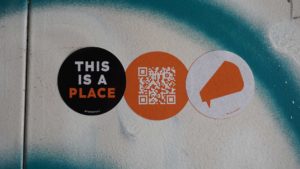
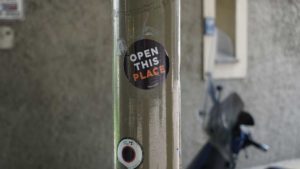
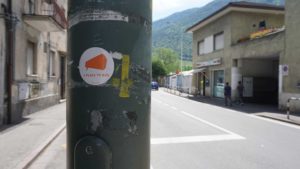
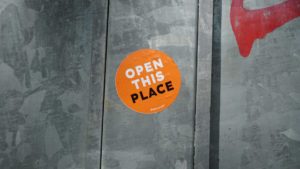

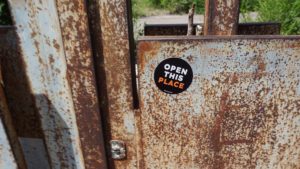
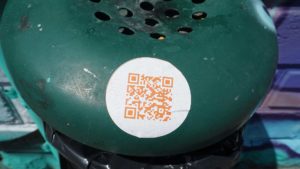
The stickers were a useful medium to carry the idea of opening the area further into the city. We created different versions of our logo, a QR code leading to the A place to B(z)-Instagram page, and the two claims “THIS IS A PLACE” and “OPEN THIS PLACE”.
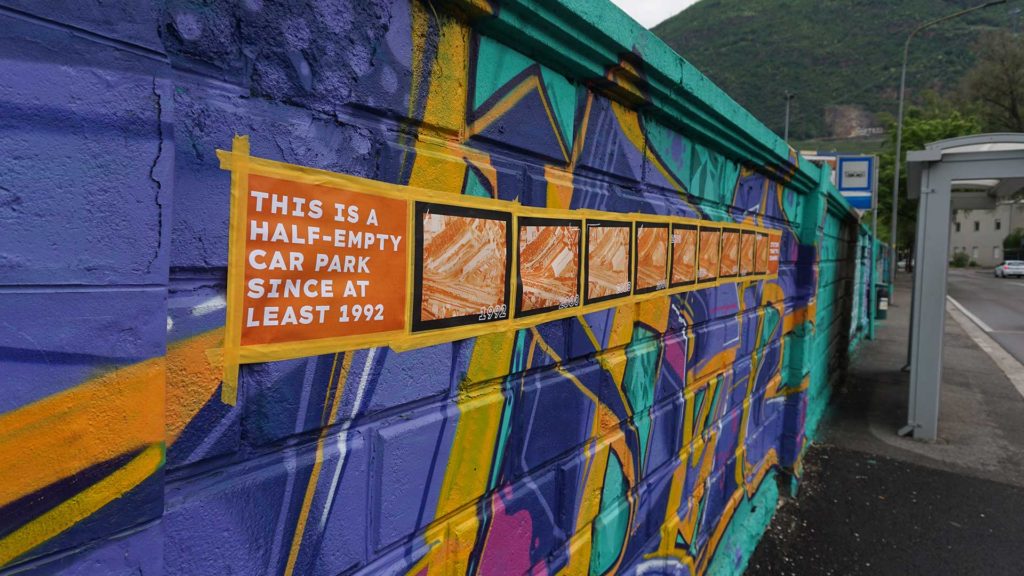
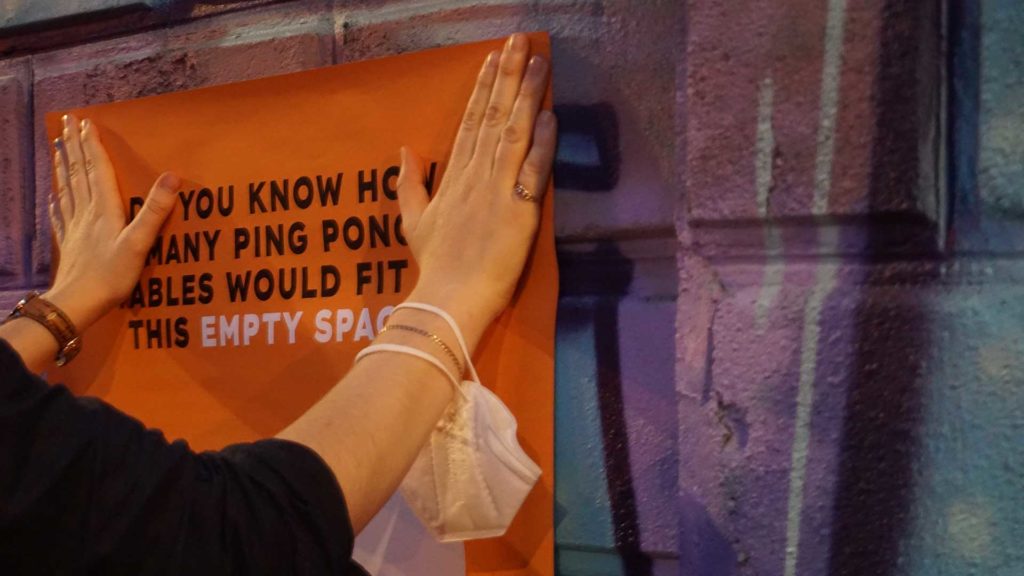
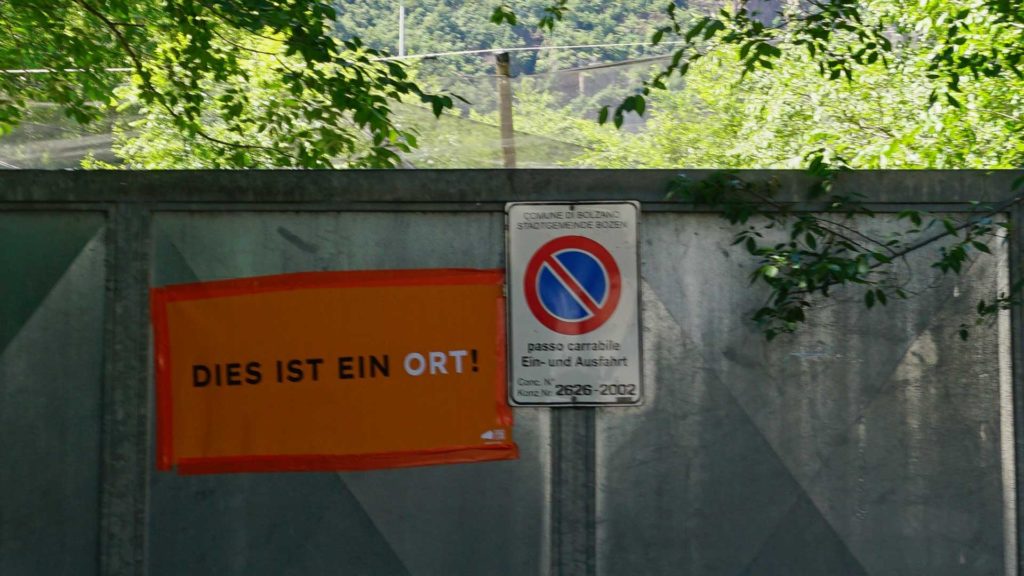
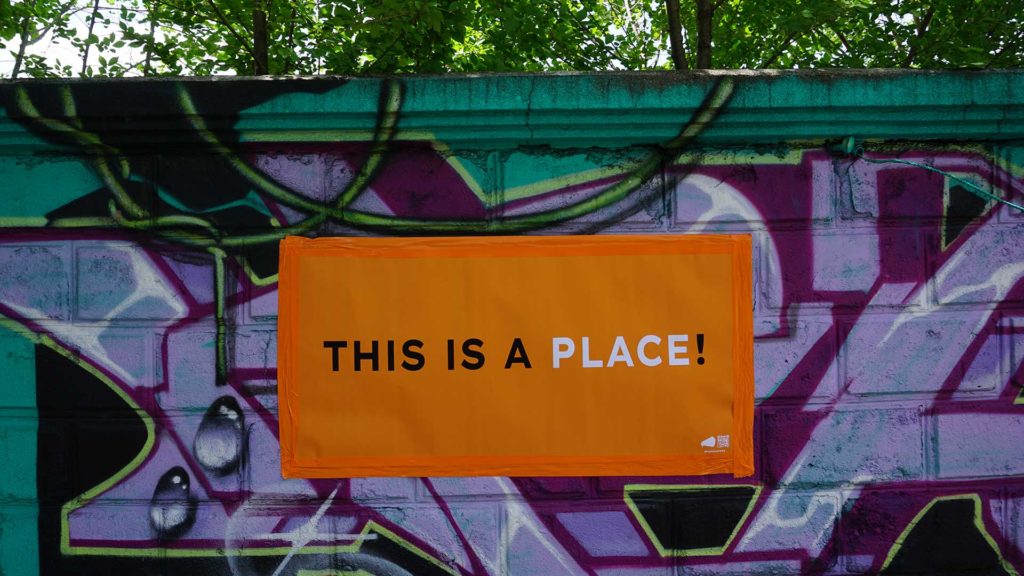

We put up several posters showing the history of the space and putting its size into perspective. The posters got taken down quite quickly when they were posted directly to the walls of the area but remained longer in different locations. Through posters, we also declared this location a place, as a symbol to counteract the forgetting of this site. All in all, these are quite easy ways to raise local awareness, but they only really work if used continuously over a longer period of time.
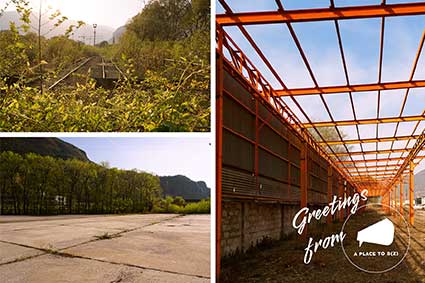

To showcase the beauty and the potential of this area we created a set of postcards depicting different locations in the area. People really liked these postcards, and we used them both as advertising at our events and as thank-you notes to our partners. If you also want them you can download the pdf and print them yourself here:
Planting the Seed
On our first visit to the site, we noticed a lot of trash, too much to clean for us alone. Therefore we invited friends from our study course to come along and help us clean up the area. As the area has been unused and therefore not cleaned in several years a lot of trash has accumulated on the site. Over the course of an afternoon, we gathered more than a dozen trash bags full of different objects.
During the collecting, we also had time to focus primarily on all the non-human actors surrounding us on the site. Aside from all the trees, flowers and bushes which are making their way through the asphalt, a multitude of animals are also living in this area. We saw many geckos relaxing in the sun and throughout the whole area, you can hear the birds singing. While cleaning we saw rather big snails living among the plastic.
Over time the trash got abraded so that there are now many small pieces of plastic in the area, which are hard to pick up. There are also big objects, that were left there by former users of the area. Whenever we cleared an area of trash, we planted flower seeds in the soil to symbolise a new beginning for the area. This action was a great way of connecting with the area.
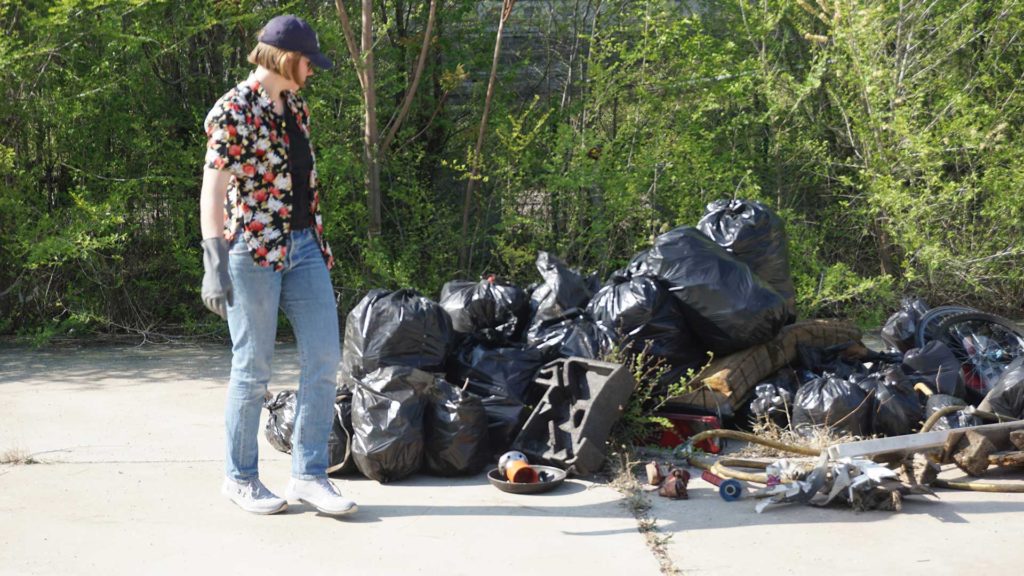
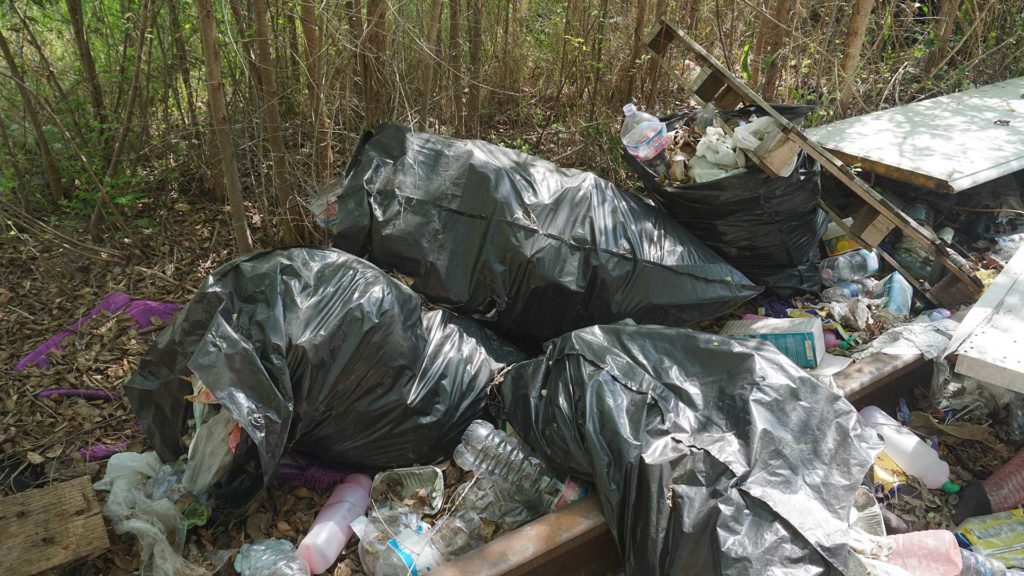
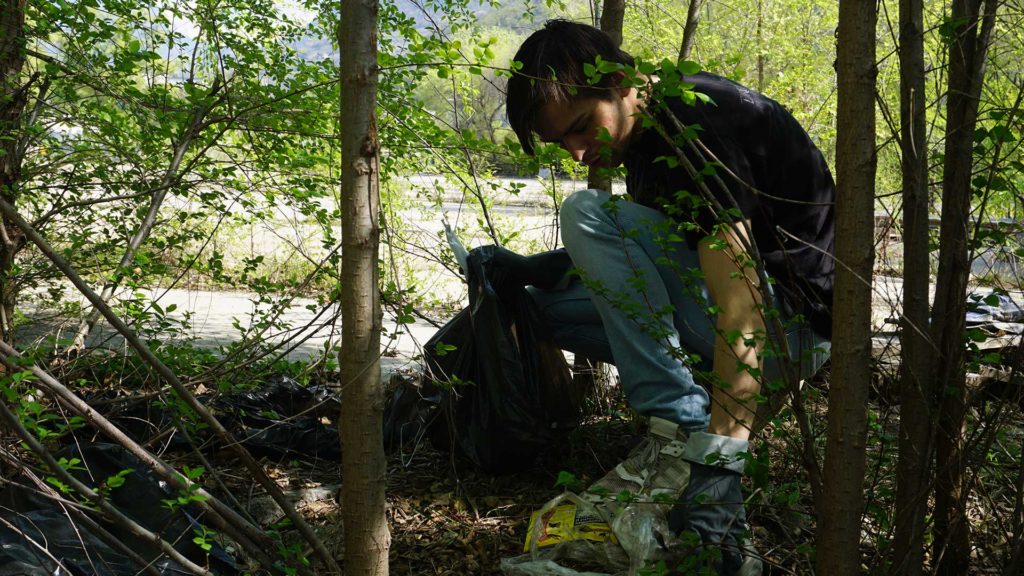
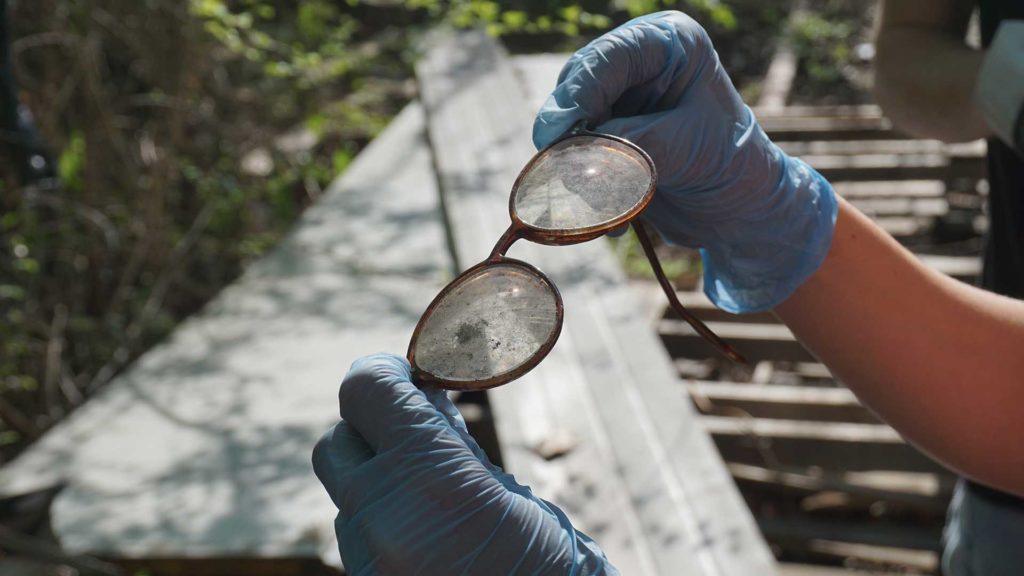
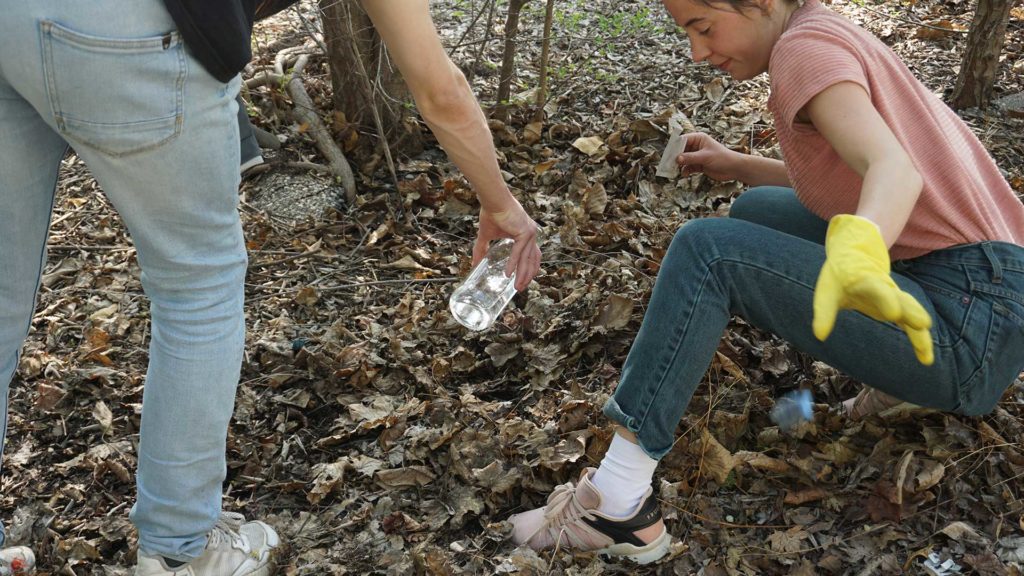
We collected all the trash and objects we found in front of one of the gates and created a big monument out of it. We wanted to shock bypassers into acknowledging this area and provoke a conversation about the uses of this area. We wrote our messages and questions in the three languages directly onto the objects we found and put them in front of the trash mountain so that bypassers could see them from the street. Additionally, we created a little peek window out of orange tape and put it onto the gate.

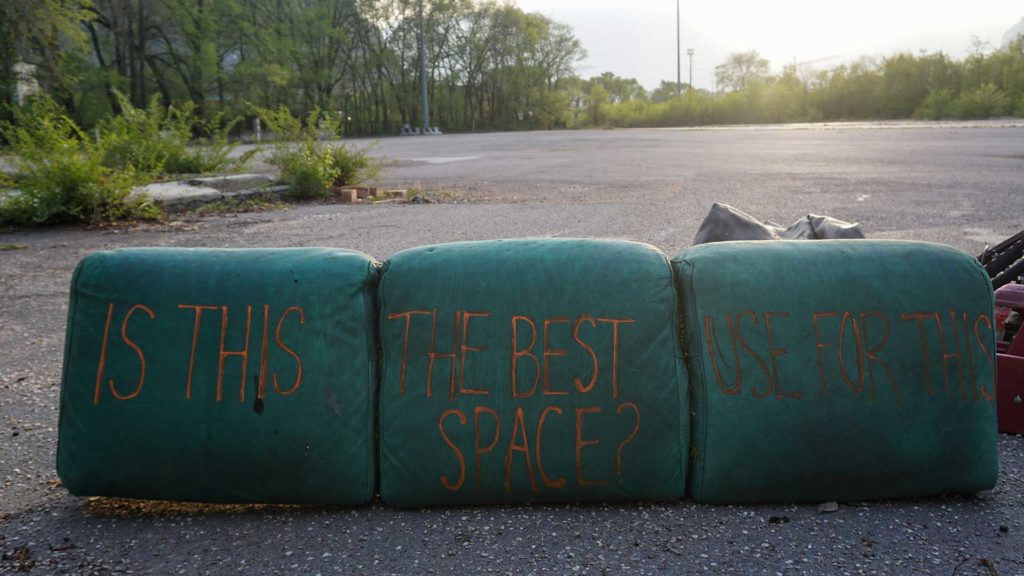
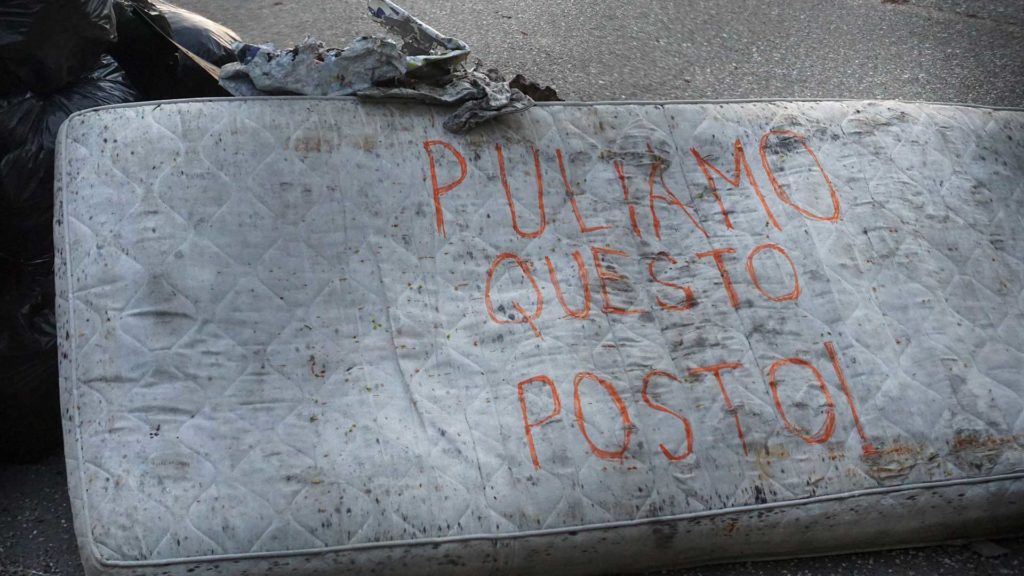
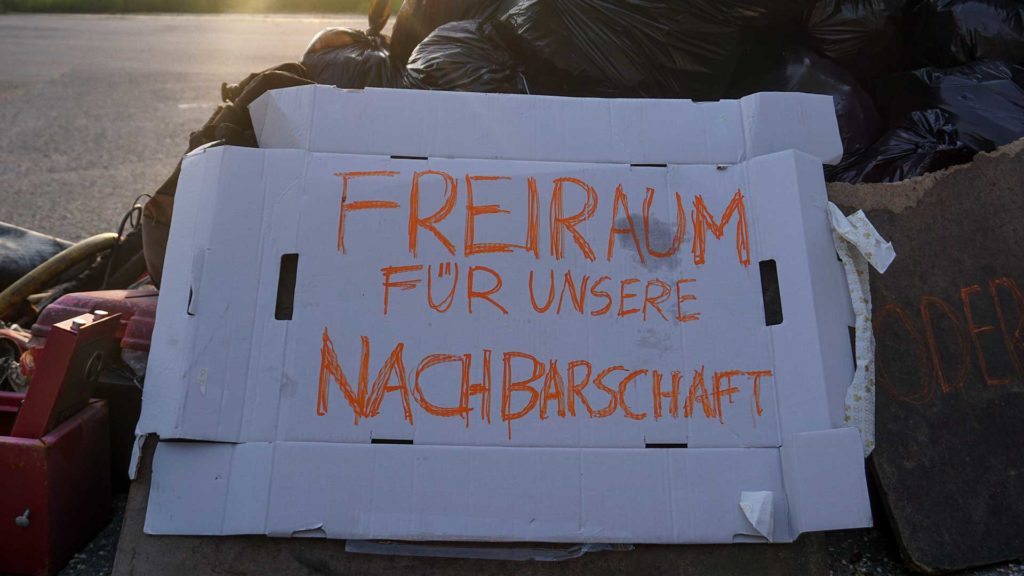
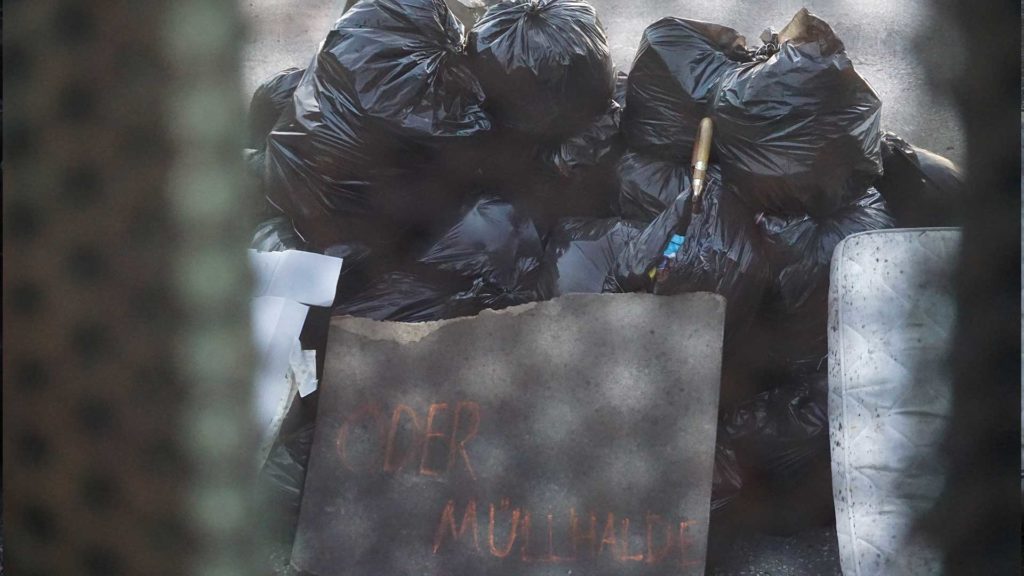
Our trash mountain remained on site for several months, in fact so long that it is now visible on google street view. Only when the municipality opened the site as a parking lot for the tourist buses in the summer was the trash mountain finally got removed.
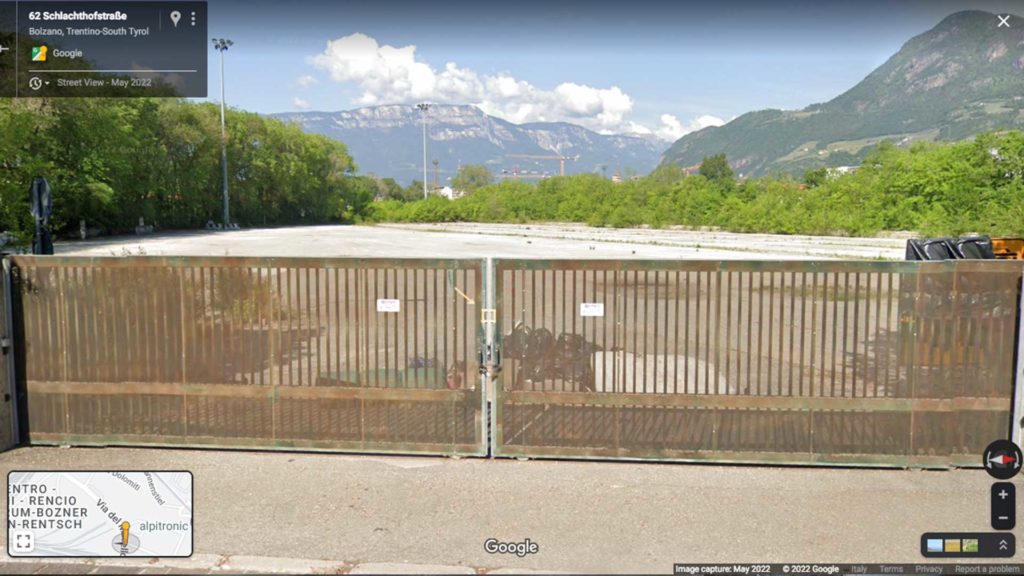
The most common object to find was plastic bottles and plastic bags. Some of the trash has been there for a very long time, some are kind of new. We found some objects related to drug abuse, like syringes, weights, aluminium foil, lighters and pure alcohol. We also found several safes. Furthermore, we found remains of former uses of the site as hoses, bricks, old pallets, parts of a trailer and planning. Apart from cooking equipment, old mattresses and clothes we also saw the remains of old sleeping places. In the entrance area of the site, we found condom packaging. Additionally, we found a lot of parts of broken bikes and two broken sofas. From the objects collected, we could conclude that people were living there and that the area held a place for sex work and drug abuse. The latter became even more apparent as we met a person who got something out of a hole in the wall. At the first opening event, we also found a stolen backpack with passports and fake bags. Some neighbours also use this area as a place for having their lunch and sitting in the sun.

PEEK-INtervention
Since the area is surrounded by several hundred meters of more than 2 meter high walls and gates heavily secured with padlocks it is first and foremost adapted to scare people off and does not exude an inviting atmosphere. We recognized the walls and gates as one of the main barriers not only to this area but also to the recognition of this area. Our aim was to create an environment where citizens feel empowered to reclaim this vast, neglected territory. We spontaneously created frames on one of the gates to nudge people to look inside the area.
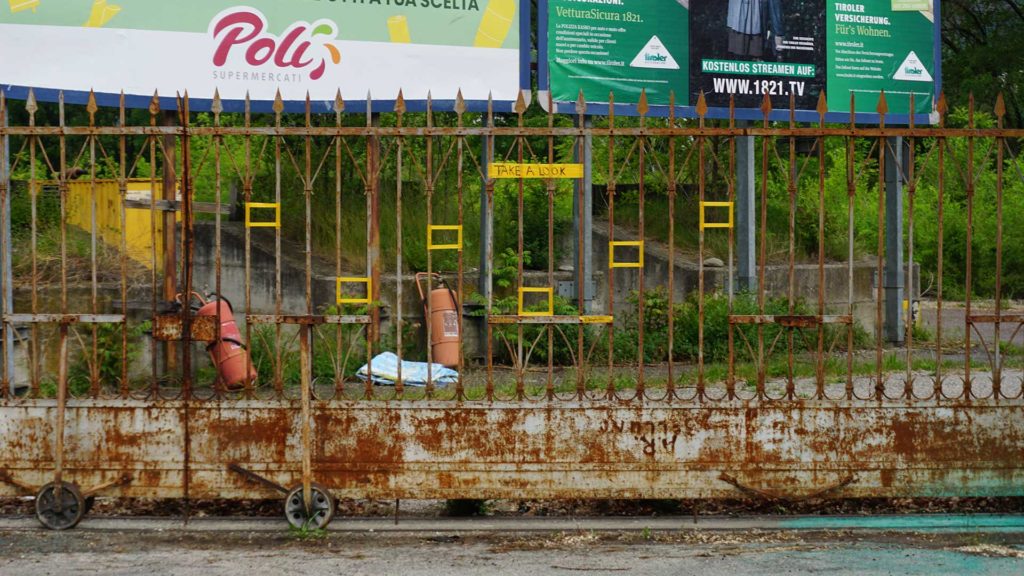
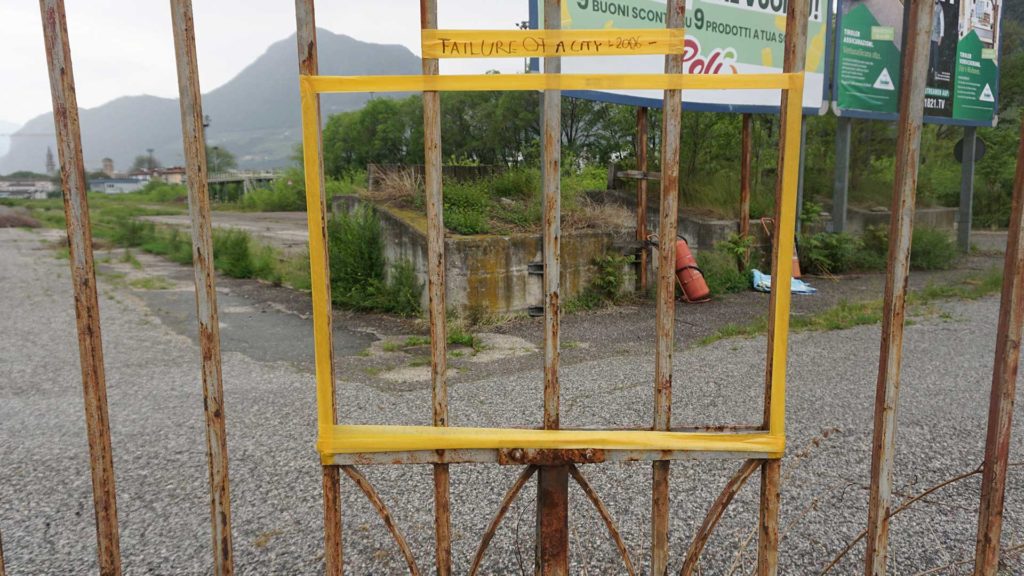
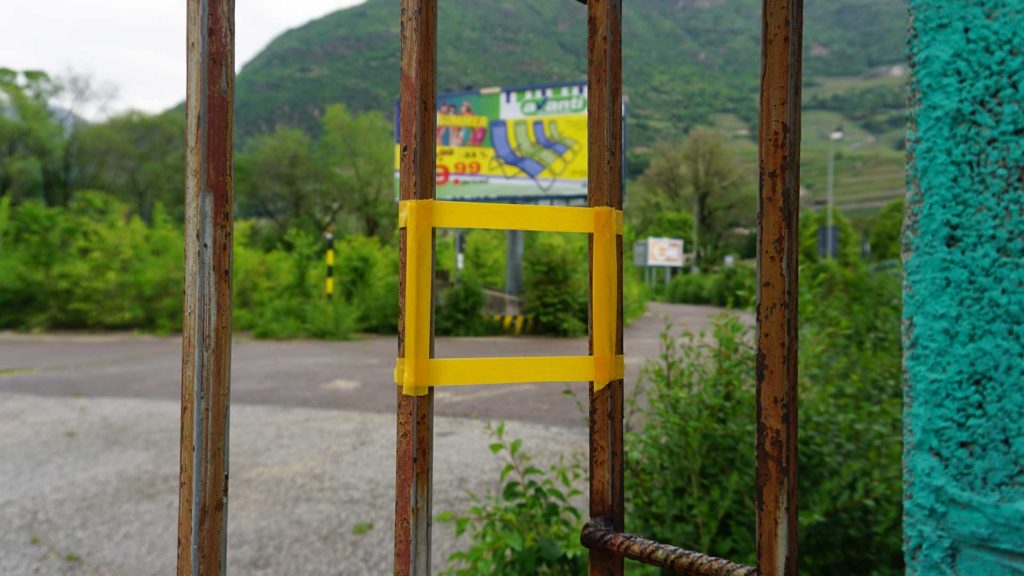
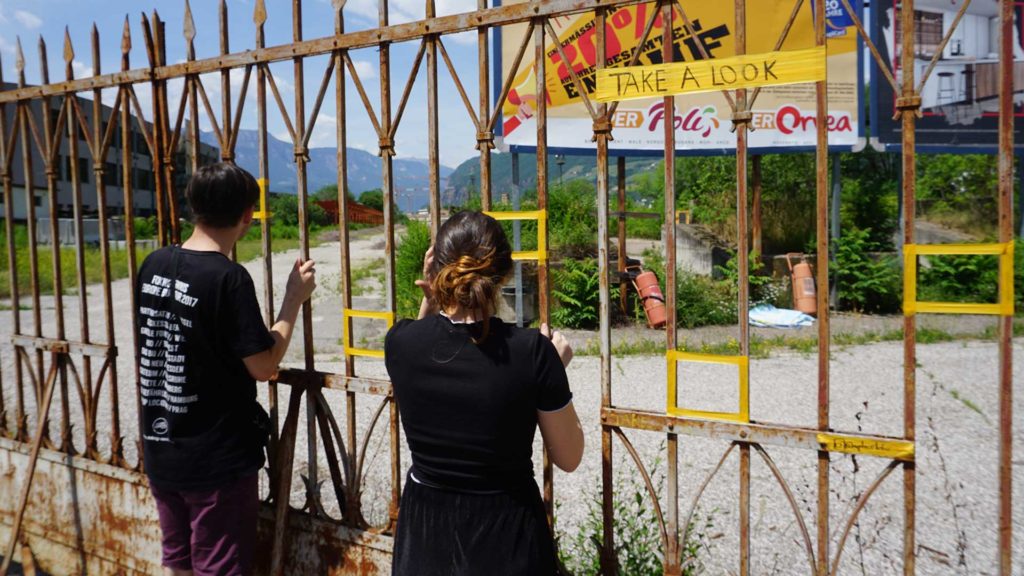
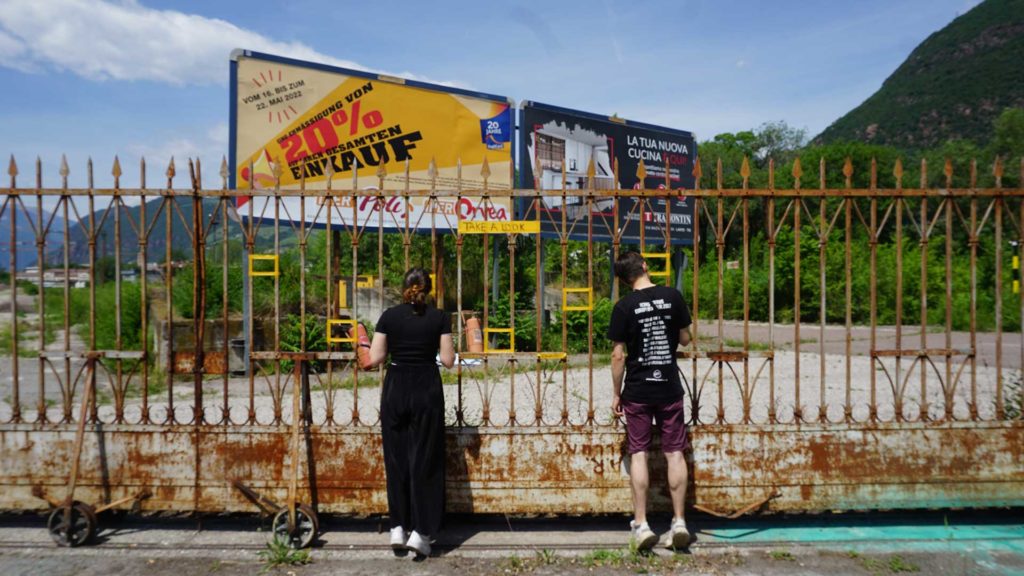
To make the walls more permeable and draw inspiration from the small telescopes that kids like playing with and the larger ones usually located in sight-seeing spots, which allow tourists to have a better look at the given attraction, we decided to build our own custom telescopes. This way we combined the message, that this area is worth looking at with the child-like mentality of discovering a new place in your neighbourhood. We installed four small telescopes on the gates, a periscope on the wall and marked another peephole. This way, passers-by and people waiting for the bus could discover the area for themselves without going inside. By installing them on the gates of the area we not only enabled by-passers to look inside the site and discover it for the first time but also raised awareness for the area.
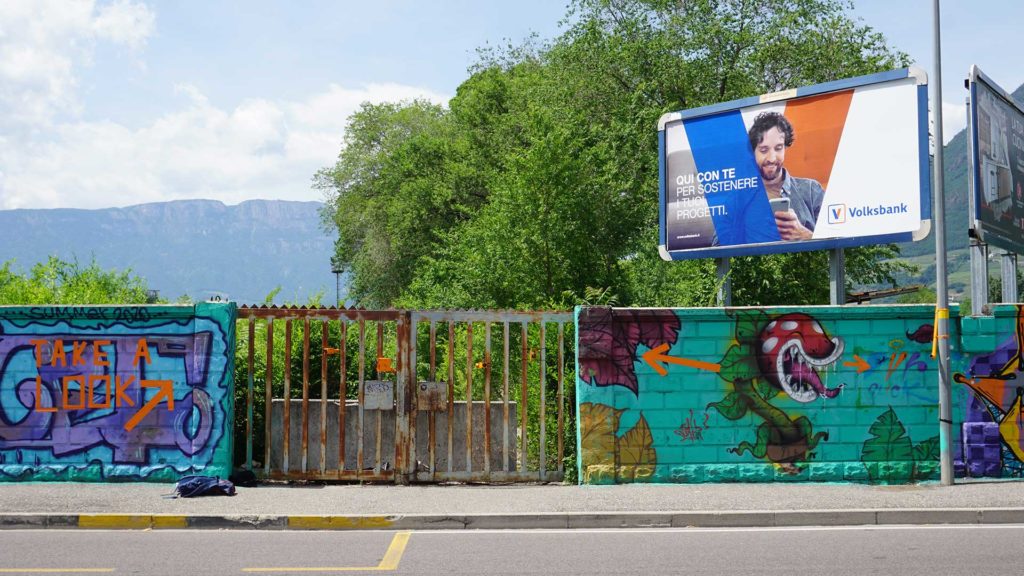
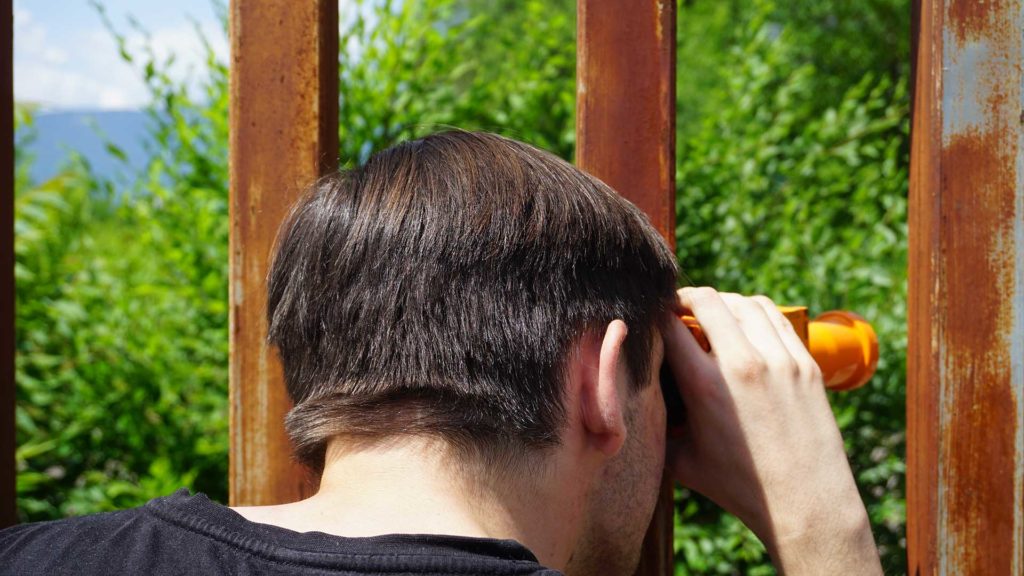
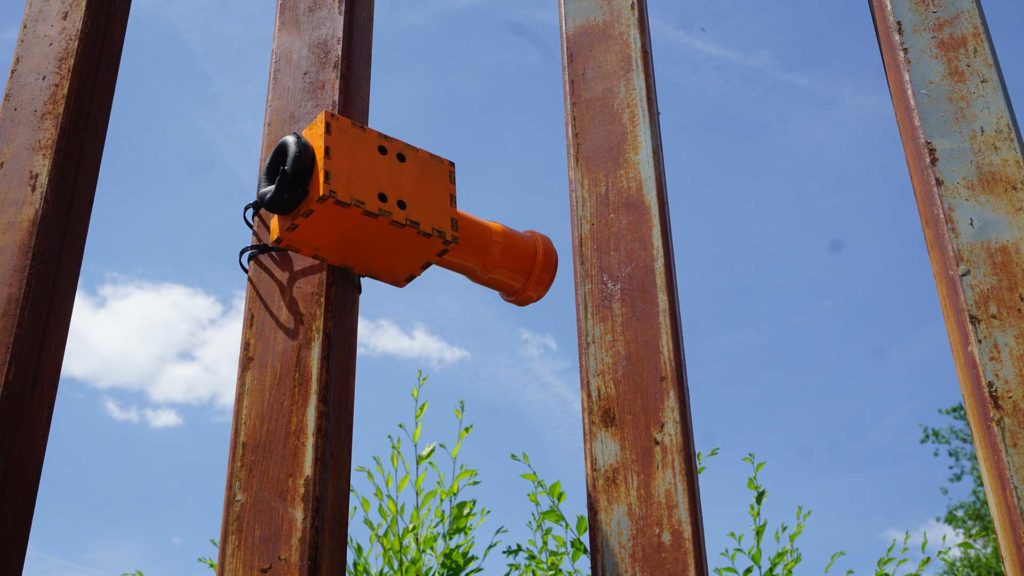
This process was strengthened by the fact that we spray-painted the telescopes and periscope in bright orange colour and put up the phrase “TAKE A LOOK” in bright orange letters next to the gate.
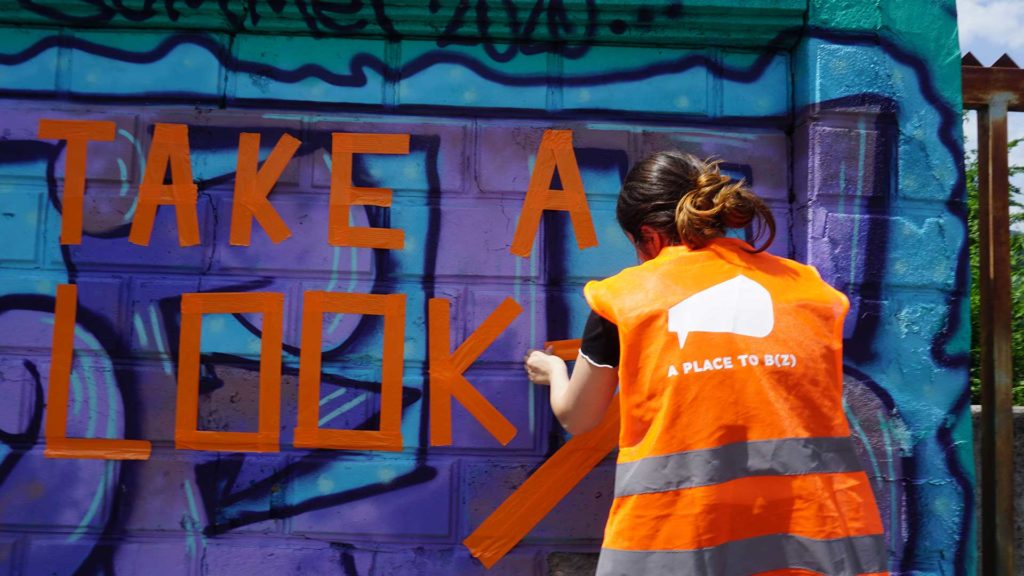
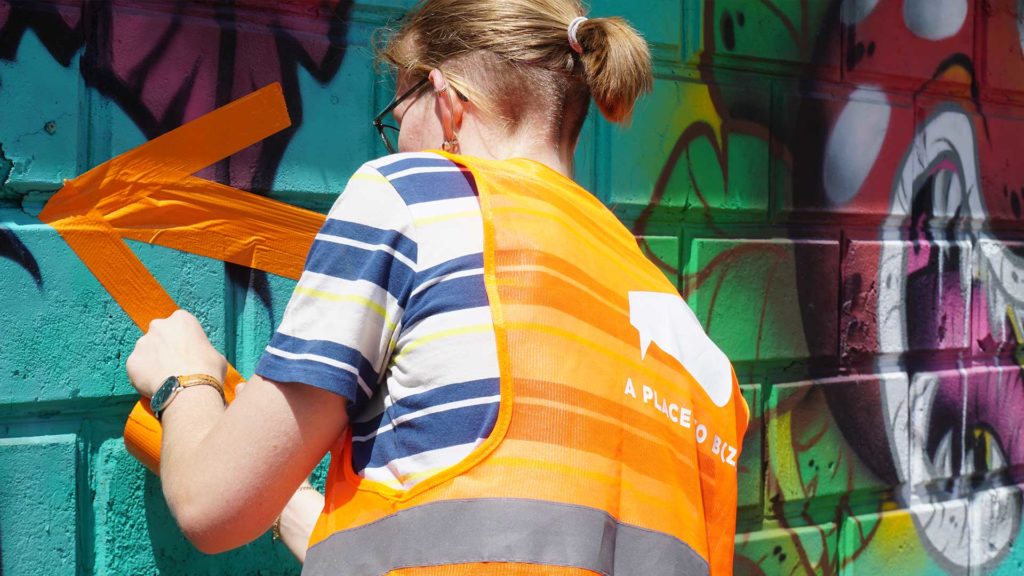
We created four telescopes, two of which were movable so that people could govern on their own what they wanted to look at and two which were fixed in place. On the lenses of the latter, we engraved two provoking questions to encourage further thoughts about the site and its current state. The two phrases were: “Why is this empty?” and “What do you wish for?”
Furthermore, we wanted to strengthen the idea of looking over the wall which is why we added a periscope to the intervention as well. This we also achieved by a step that we placed in front of a lower part of the wall.

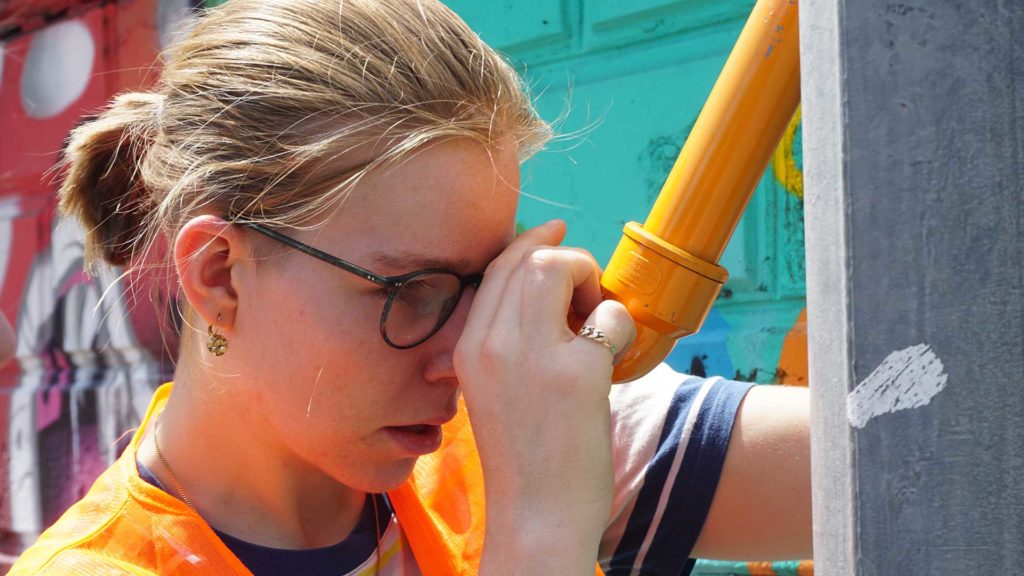
Touring the Site
After a long and confusing, bureaucratic process we were finally allowed to enter the site with a small group of people. When we gathered in front of the entrance, our group quickly grew in size, attracting by-passers to join, as it was the first opportunity for all of them to see the area for themselves. Next to the neighbours, who we had invited through posters and Instagram posts, a group of members of local associations and representatives of the city joined our tour.
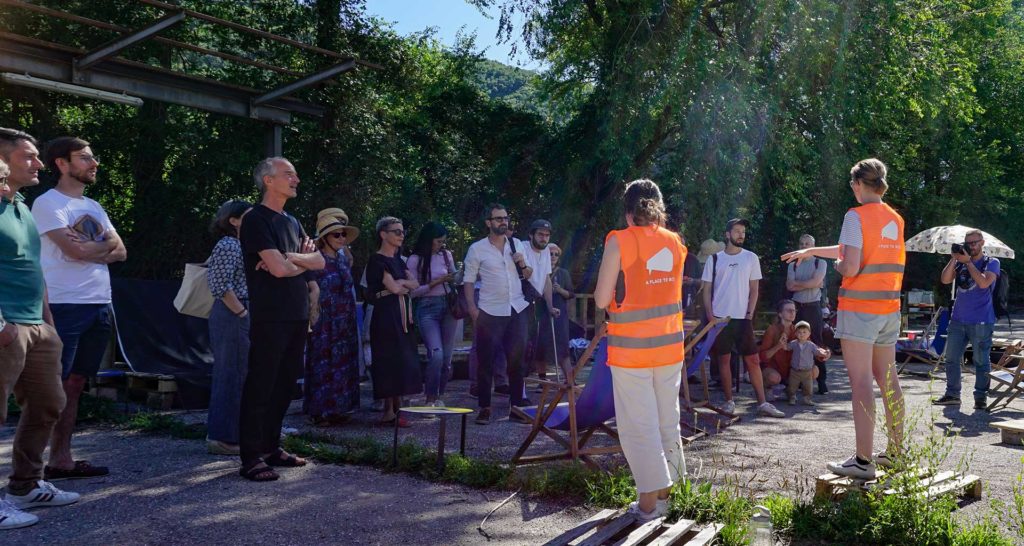
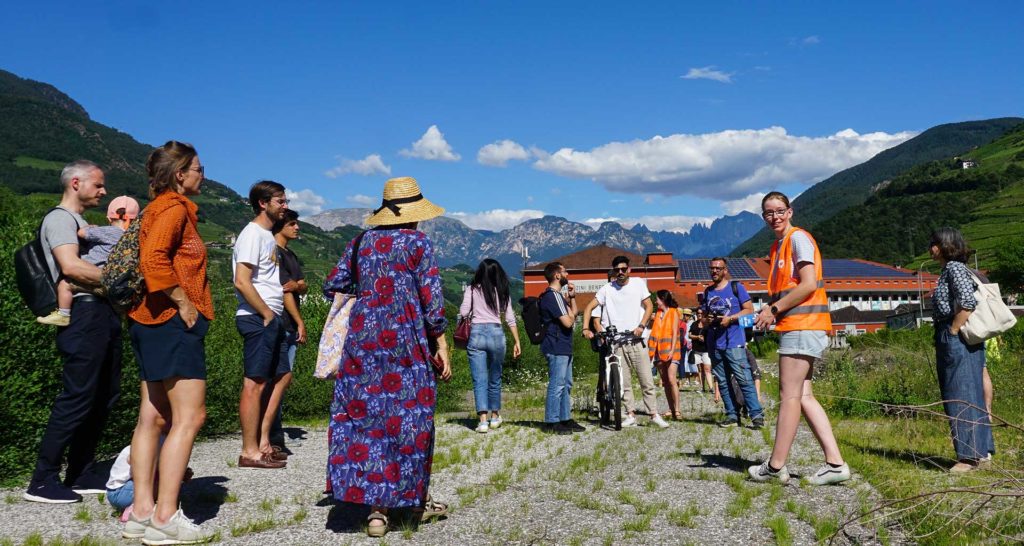
During the walk, most participants were struck by the enormous size of the area. By walking we showed them the three main zone of the site. The first zone is an area, which was used to store cars before selling them, hence the protective hail nets. We consider the big parking lot the second zone. In times of high touristic volume, it is used for coaches. The third zone consists of the orange structure and old rail tracks. To see more pictures of the area click here. This event was the first time in over thirty years that a group of citizens had been granted access to this area. As we walked some participants started sharing stories they knew about former uses of the area.

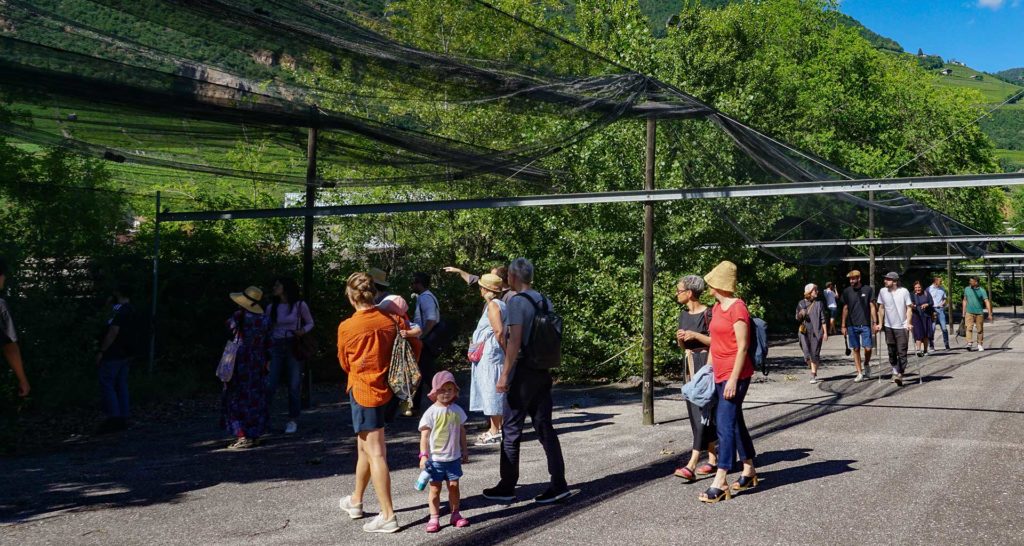

This event was facilitated by the network of partners we were able to build up throughout the course of this project. Lungomare supported us with their co-carts and some chairs. Furthermore, VKE lent us a variety of different games to play on-site. Additionally, some local shops helped us in finding materials to build urban furniture. Salewa gifted us some old advertising banners to use as seat pads.
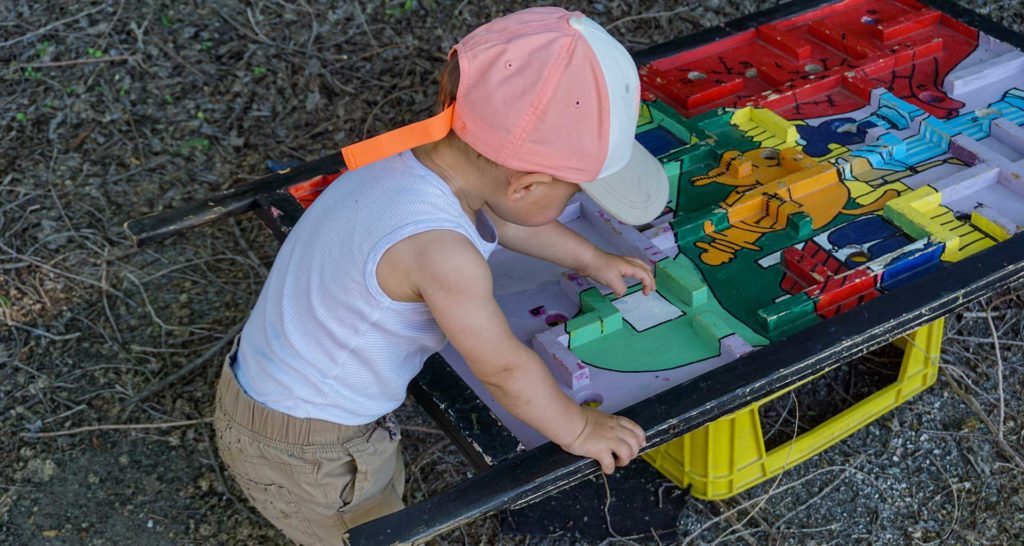
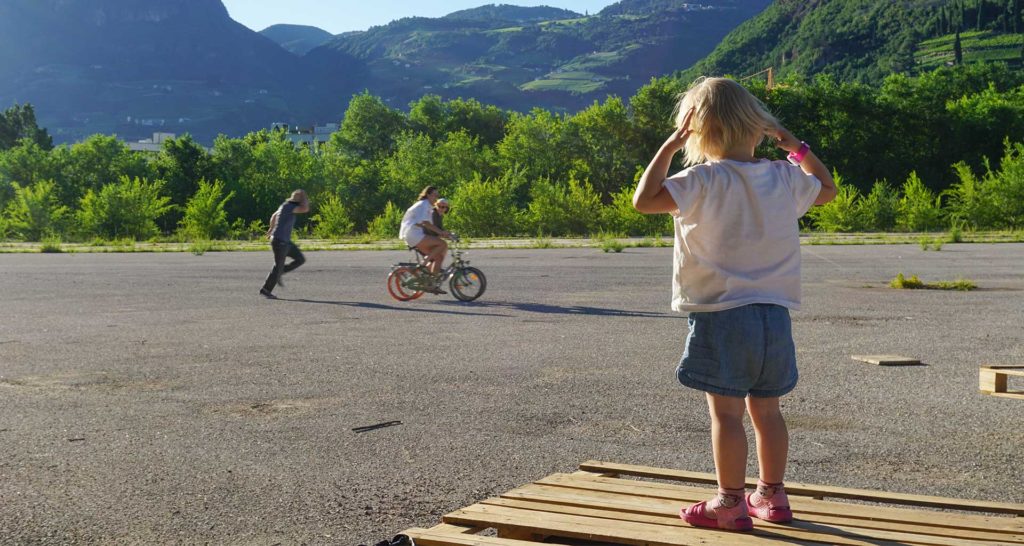
The next morning we met on site for a sunny early-bird-breakfast. We were joined by a group of people who toured the sites of the New European Bauhaus Festival in Bolzano by bike and started their tour in our area.
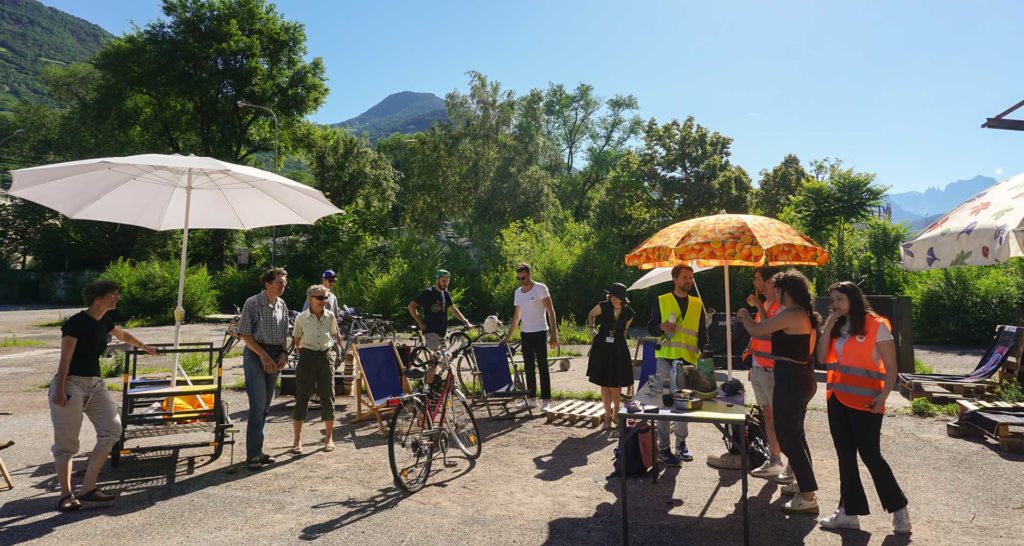
Accompanied by music played by a bicycle-DJ-set by the project in Motion we toured the area again, this time all on bikes. It was interesting to see that, although this area lay vacant for the better part of the past three decades, it was fairly easy to drive through it with a bicycle.
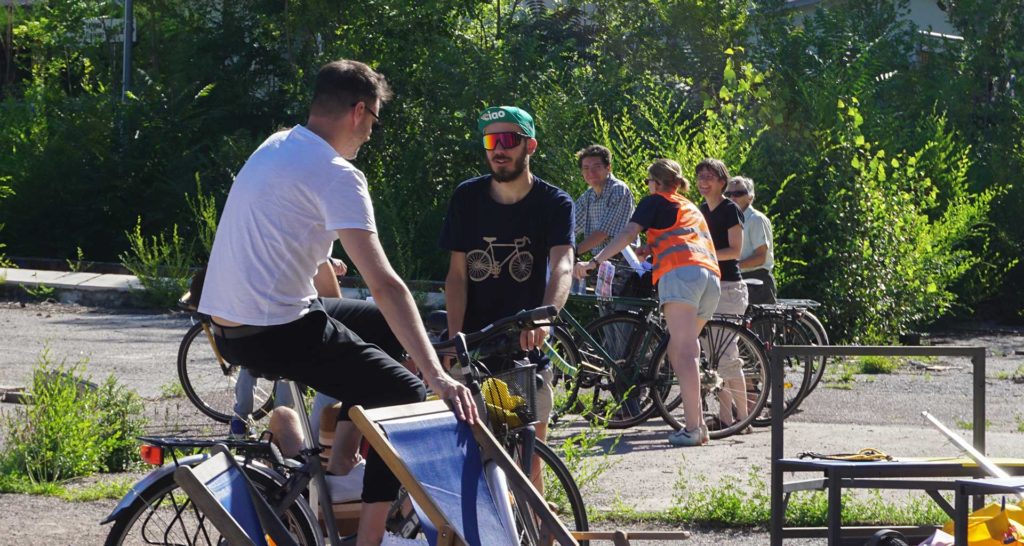
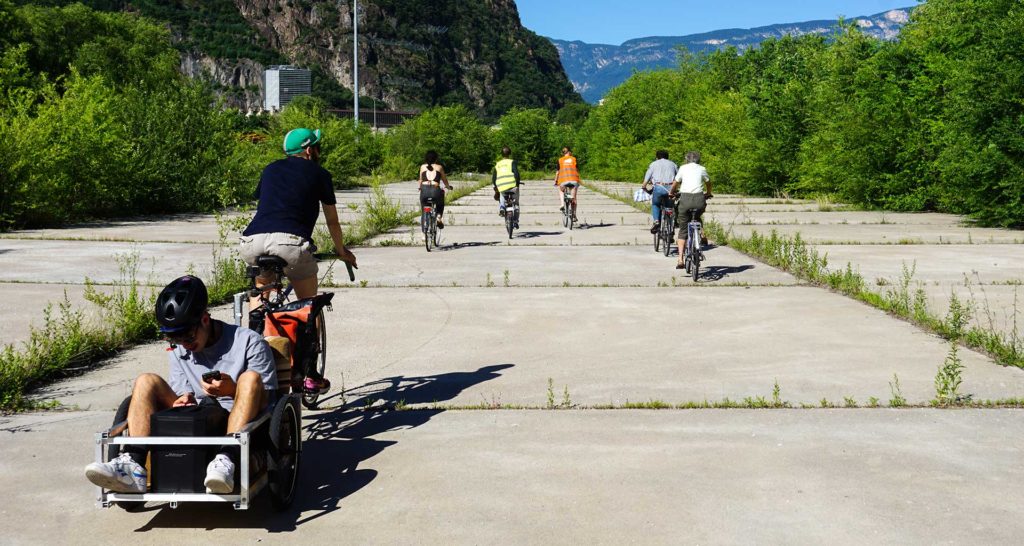
As the area is enormous, bikes were a nice form of locomotion and one could move quickly from one end to the other. It was also a great opportunity to show and experience different uses of this site.
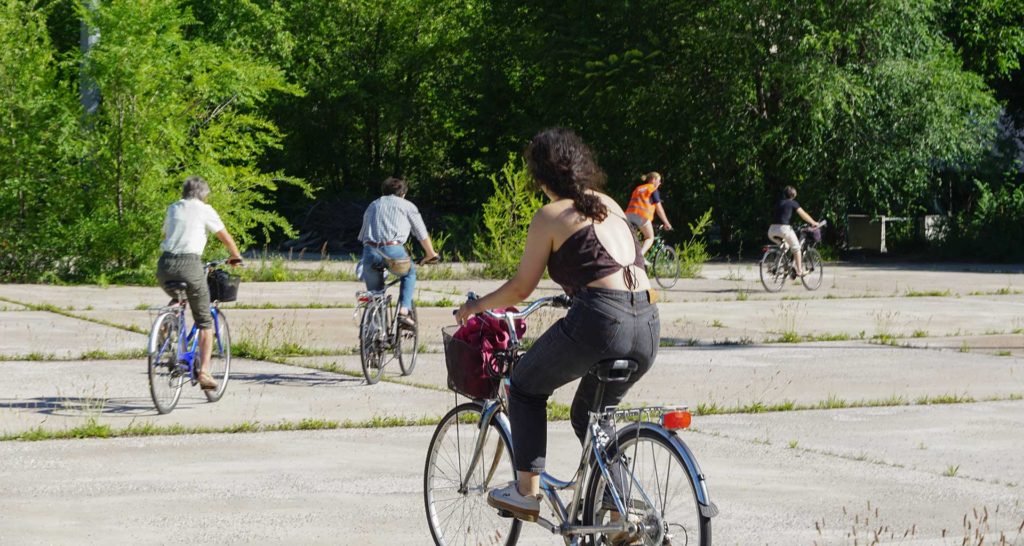
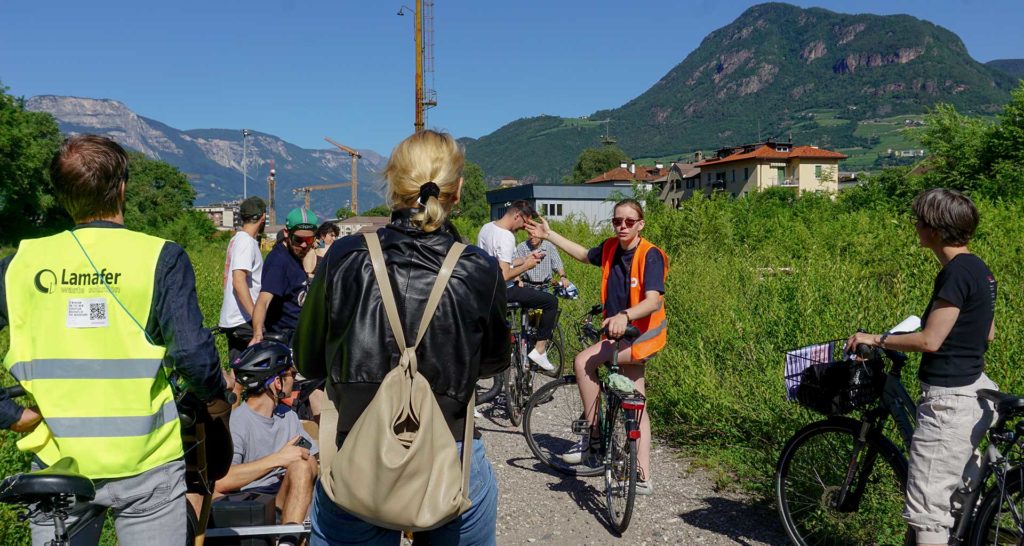
See more tours.
Having conversations
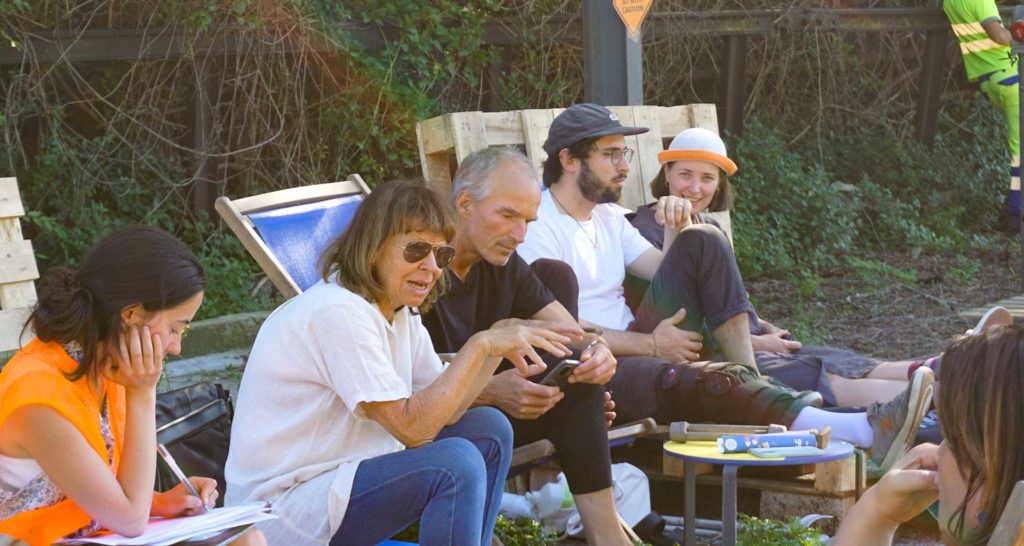
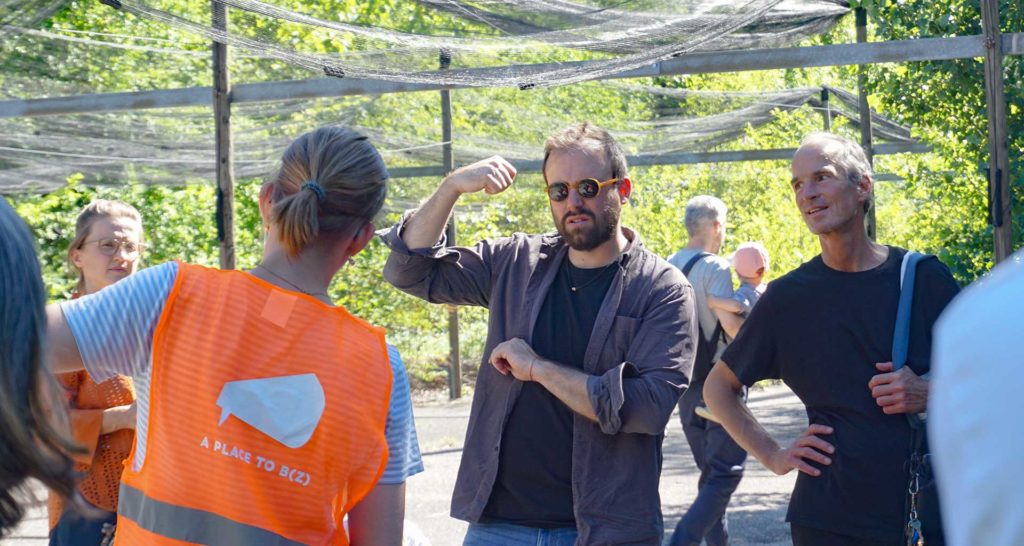
Being on-site had a galvanizing effect on the discussion around possible uses for the site as many felt inspired by their surrounding. Experiencing alternative futures helps to believe that things can be different. Together we can work on building this future.

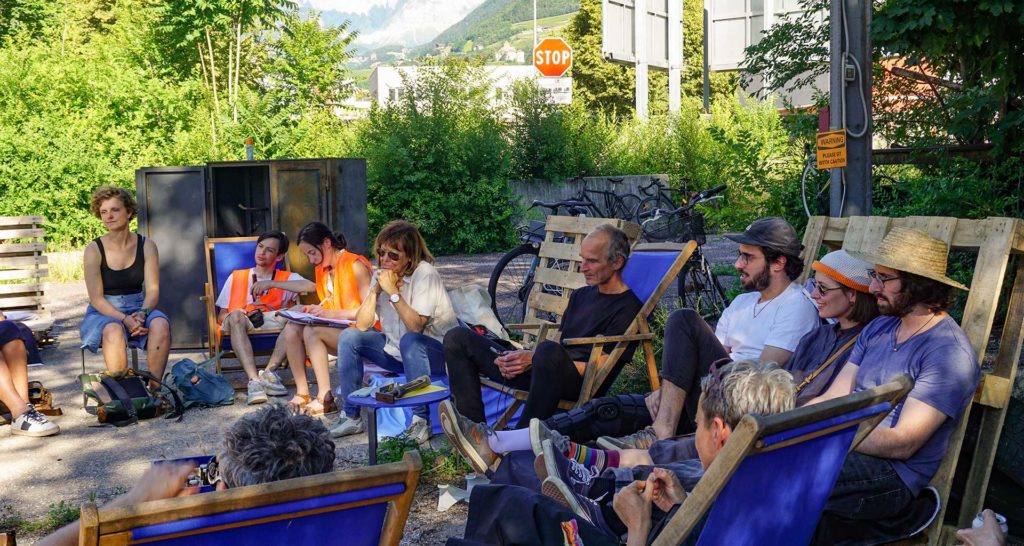
A place to B(z) in the media
The media, such as Dolomiten and Alto Adige, have repeatedly reported on our project. Besides multiple articles on salto and FF, Rai has also published reports on our work.
Presenting our Work
Wrapping up the semester we presented our work at unibz’s GOG, the traditional exhibition at the Free University of Bolzano of students’ works resulting from their semester projects. This was a great opportunity to introduce new people to the area and resulted in many insightful conversations.
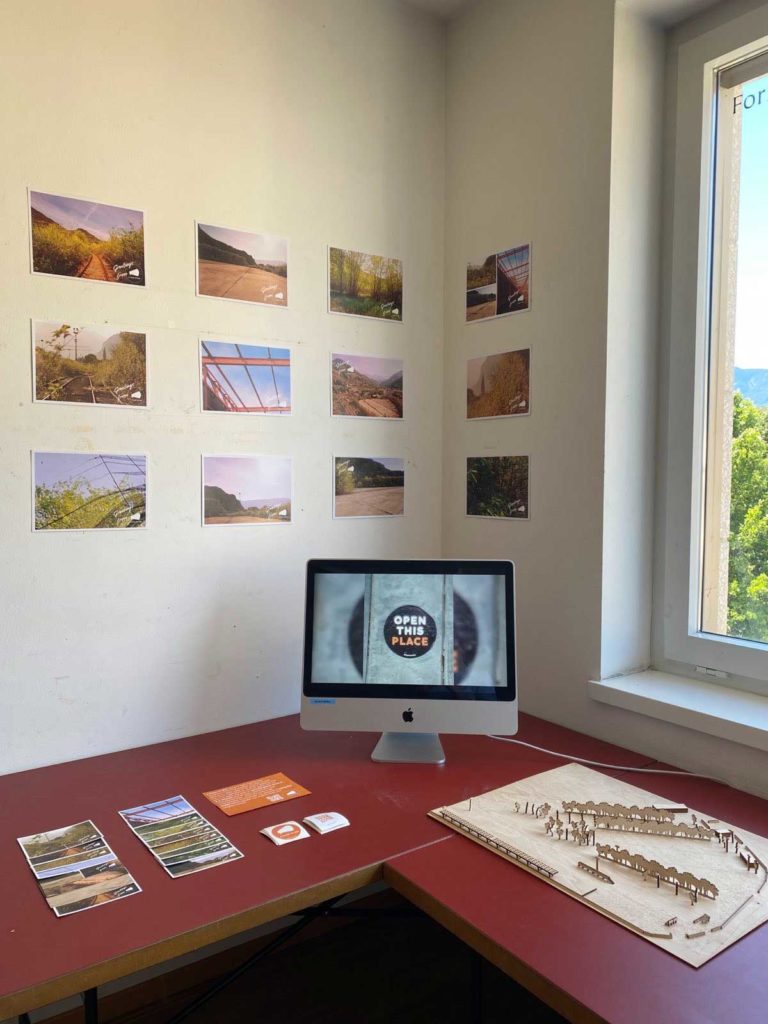

The end of the semester did not mean the end of the project. Although in a different team configuration, since Áron Lőrincz had to return to Budapest after his Erasmus semester in Bolzano, we have continued our work with A place to B(z). Our project has now grown into a citizens’ initiatve, that consists of interested local citizens. To further galvanize the conversation about the area we presented our project at a variety of different opportunities, like an event, we held at lungomare or at the A place to B(z) conference, that was held in the remise next to the area.
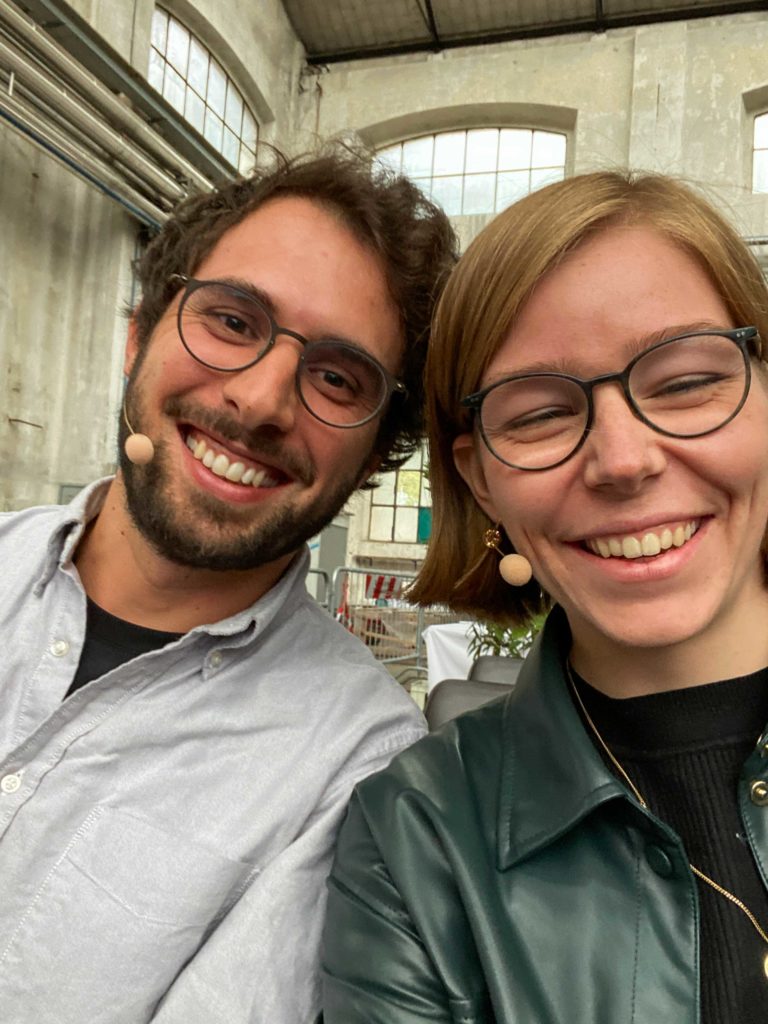
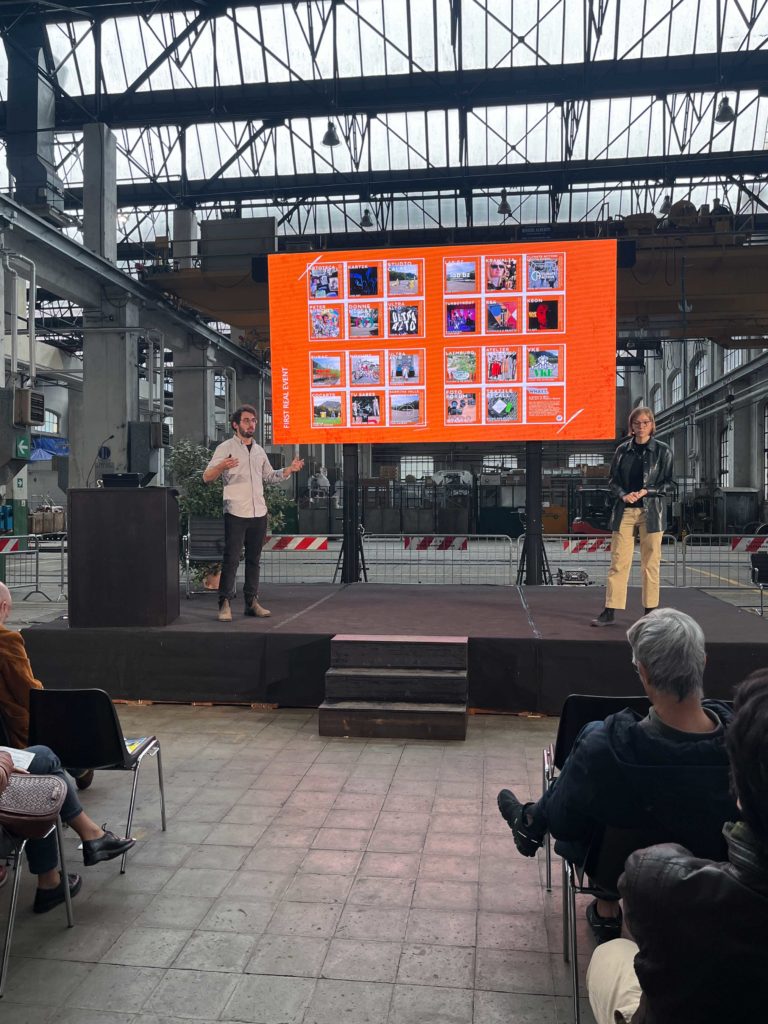

Furthermore, we present this project in local schools, such as Wirtschaftsoberschule Heinrich Kunter.
Building a Network
This project aims to facilitate better collaboration between citizens, associations and the municipality. Connecting and helping each other is a vital part of a flourishing city society. None of our events would have been possible without the continuous support of a broad network of partners. Early on we send out questionnaires to a variety of local associations and clubs to learn more about their wishes and resources.
We took part in blufinks‘ Ideensalon, which is focused on giving room for ideas and linking them with people who can share their expertise and knowledge. They want to create new rooms for learning and collegial advisory and foster a new kind of culture of solidarity and activism. In conversations with other people who work on projects in Bolzano, we realized that one of the main barriers is the administrative complexity and lack of clarity in the process.
Reaching further
This website is part of our effort to reach as many people as possible with our ideas. On the one hand, of course, to raise the profile of the area in general, but on the other hand also out of our deep conviction that transparency and information are necessary to promote citizen participation. Early on we already established an Instagram channel, where you can find pictures and videos of our work.
Connecting Internationally
On Wednesday the 16th of November 2022 we took part in the EUniverCities conference in Innsbruck. This event focuses especially on the promotion of collaborations between universities and cities in the EU. For Bolzano we joined with the municipal council of Bolzano, Chiara Rabini, professor for eco-social design Kris Krois and Philipp Rier and Marielle Scharfenberg from A place to B(z).

A group of people with backgrounds in both administration and project planning from different European countries had gathered in the plenary room of Innsbruck’s City Hall. Under the title “Abandoned or underused spaces – unlocking the sustainable potential for people” we had planned a workshop facilitating knowledge exchange and discussions between participants. After a short introduction by the municipal council of Bolzano, Chiara Rabini and Professor Kris Krois on the collaboration between the city and university, Phillip and Marielle gave the participants a short overview of the vision, process and challenges of A place to B(z).
Following the presentations, participants were able to share their knowledge and help with their personal expertise in finding solutions to problems related to reactivating abandoned places. In a world café setting participants were able to share their experiences with (re)activating abandoned and underused places. We deliberated on obstacles and how to overcome them, leading to a discussion on what kind of policies and attitudes are required to unfold the potential of abandoned or underused spaces.

Key insights we took away from these fruitful discussions were to include as many different groups as possible in the process and to build up a tight network of local actors and organizations, e.g. organizations and students, who can support the project with their expertise. To emancipate citizens in taking part in revitalizing their neighbourhood there is a need to lower barriers like permissions and bureaucracy. The city should actively work towards passing regulations that enable active civic engagement and establish this as a course of action for municipal work. In the meantime, a bureau of civic engagement and public participation should be appointed. This way citizens could be supported in their initiatives and get assistance in navigating the jungle of bureaucracy. Funding and finance are important factors as these projects are usually long-term and time intensive. To facilitate these initiatives the municipality should provide a starting budget and support the initiative in finding further funding.

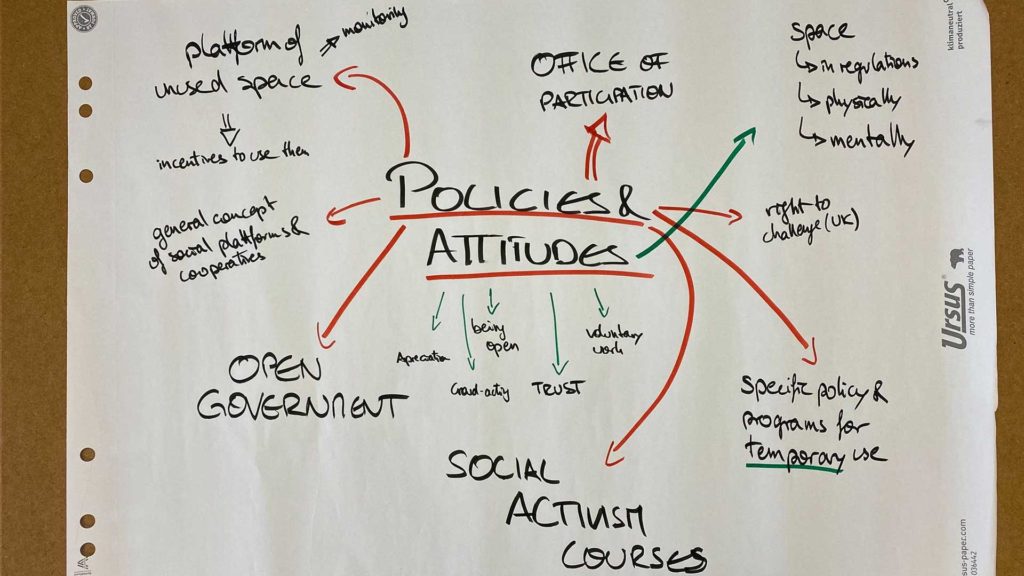
This event was a great opportunity to network with leaders and administrators of international projects and to learn from each other. As we face similar problems across the EU, it is only reasonable to collaborate in the ongoing process of finding solutions as well.
